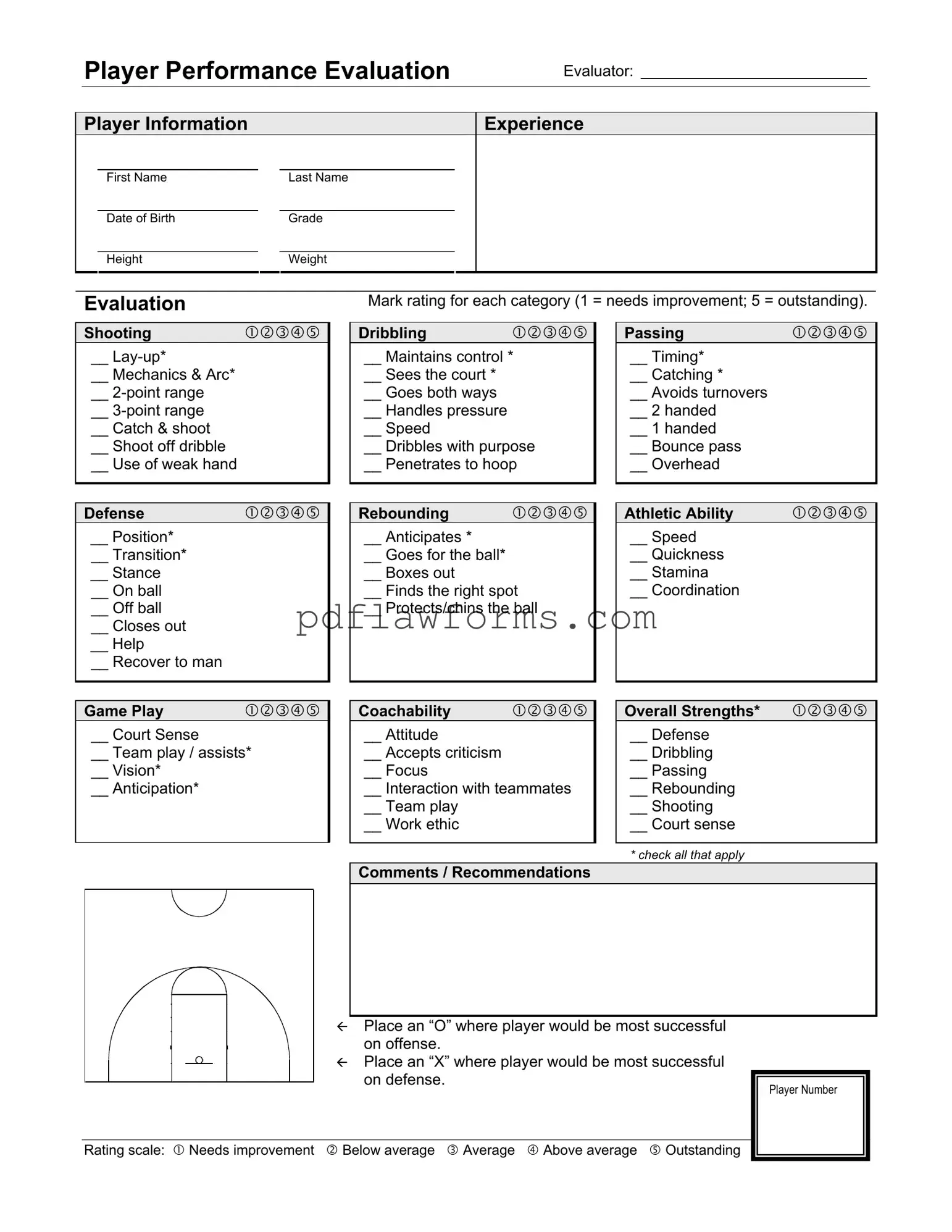Filling out a Basketball Evaluation form can be straightforward, but there are common mistakes that people often make. One of the biggest errors is not providing complete player information. Missing details like the player's first name, last name, or date of birth can lead to confusion later. Always ensure that all sections are filled out accurately.
Another mistake is misunderstanding the rating scale. Some evaluators may forget that a score of "1" means needs improvement, while "5" indicates outstanding performance. This can skew the evaluation and misrepresent a player’s abilities. It’s crucial to keep the scale in mind while rating each category.
Many evaluators also overlook specific categories when marking the evaluation. For instance, they might forget to assess the player's mechanics and arc in shooting or neglect the importance of defense positions. Every category is designed to provide a complete picture of the player's skills, so each one should be considered.
Additionally, some people fail to provide constructive comments or recommendations. Simply marking scores without any feedback doesn’t help the player improve. Comments can guide players on what they excel in and where they need to focus their efforts.
Another common mistake is not being objective. Personal biases can creep in, affecting how a player is evaluated. It’s important to remain neutral and base evaluations solely on the player’s performance during the assessment.
Not observing the player in various game situations is another pitfall. Evaluators should watch players in different scenarios to get a comprehensive view of their skills. Relying on a single game or practice can lead to an incomplete evaluation.
Some evaluators may also forget to check the boxes for strengths. This section is crucial for highlighting what the player does well. Leaving it blank misses an opportunity to recognize and encourage the player’s strengths.
Another mistake is failing to assess the player’s coachability. Evaluators should consider how well the player accepts feedback and interacts with teammates. This aspect is vital for a player's growth and development.
Finally, not discussing the evaluation with the player can lead to misunderstandings. It’s beneficial to go over the results with the player, explaining the ratings and feedback. This dialogue can motivate them and clarify any points of confusion.
